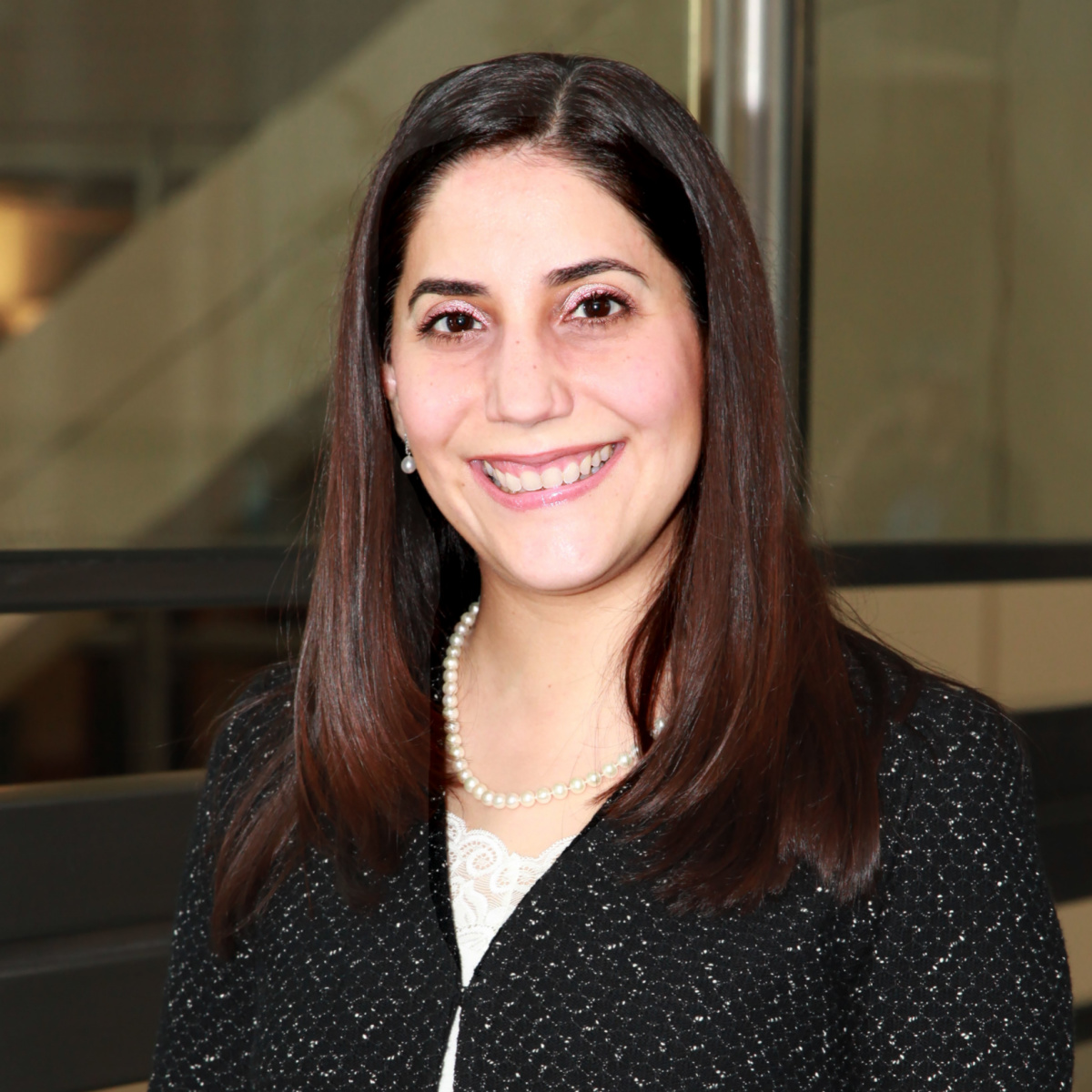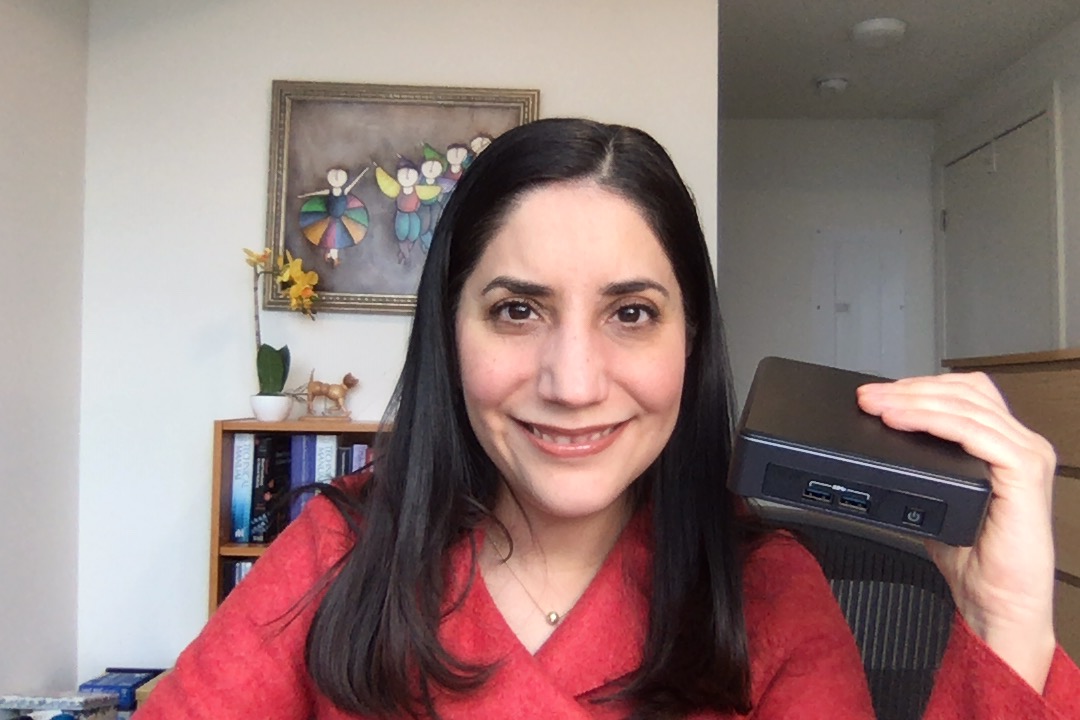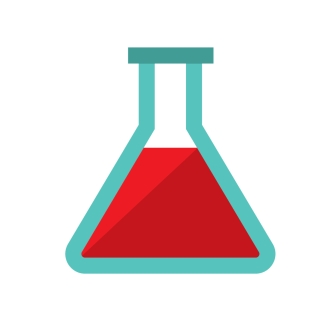Dr. Celina Montemayor-Garcia on the potential of genomics to shape the future of transfusion medicine
Thursday, January 14, 2021 Tricia Abe
Dr. Celina Montemayor-Garcia joined Canadian Blood Services in August 2020 as a medical officer. As a researcher and transfusion medicine specialist, her main interest is understanding how genomics and bioinformatics can be used to improve care for transfusion patients. She spoke to us about advances in precision medicine and genomics, and what they could mean for the future of blood banks.

When Dr. Celina Montemayor-Garcia, medical officer at Canadian Blood Services, was looking for a career in medicine that would allow her to combine research and clinical service, she found her calling in transfusion medicine. “I enjoyed how close it was to patient care and I could see all the research opportunities to look at the genomic basis of antigenicity and immunohematology,” Dr. Montemayor-Garcia says of her decision to specialize in transfusion medicine. “I was just convinced that I’d be happy practicing transfusion medicine for the rest of my life.”
After completing a Transfusion Medicine fellowship at the US National Institutes of Health (NIH), she stayed on at NIH as a staff member and assistant clinical investigator in the department of transfusion medicine. At the time, the application of genome technologies— particularly a new powerful technology called Next Generation Sequencing (NGS)—to the study of specific diseases was leading to exciting advancements in medicine. But little was known about how the technology and the vast amounts of genomic data it generated could be applied to transfusion medicine. By leading efforts to develop software for interpreting sequence data into a precise blood type (the paper will be published soon in the journal Vox Sanguinis), Dr. Montemayor-Garcia was the first at NIH to apply NGS to the field of blood antigen typing.
Next-generation sequencing and the potential for blood group typing
Next Generation Sequencing makes it possible to sequence many millions of DNA molecules at the same time, often described as “massively parallel, high throughput.” The technology is faster and cheaper than the classical method of DNA sequencing, known as Sanger sequencing. With NGS, it’s estimated that a human genome can now be sequenced for less than $1000, compared to the estimated $300 million cost of sequencing the first draft human genome. According to Dr. Montemayor-Garcia, the technology opens exciting new possibilities in blood group genotyping that could significantly boost our ability to identify genetic variants and provide even better-matched, safer blood components for patients.
Traditional methods of determining blood group antigens are based in serology, an analysis of antibody-antigen reactions. But serological testing can be inconclusive or not possible (if reagents needed for testing aren’t available)—and that’s where genotyping helps fill in testing gaps.
With probe-based genotyping methods (a method that can detect specific variations in targeted genes), our ability to detect blood group variants is considerably improved over serological methods. “All of the blood groups are written down and encoded in our genetic material. It’s like reading a book,” says Dr. Montemayor-Garcia. “Our transfusion medicine colleagues have done a really good job of identifying a genetic variant and linking it to the actual blood group antigen that is being expressed. So we have this very nice catalogue of genetic variants and their corresponding blood group antigens.” In practice, this precise knowledge of blood group antigens is used to provide transfusion patients with optimally matched blood components, avoiding the mismatches that can lead to serious adverse effects. For example, at Canadian Blood Services extended genotyping to identify red blood cell antigens is the standard of care for patients with sickle cell disease, a patient group especially vulnerable to the risks of transfusion.
But the current genotyping method has its limitations. Dr. Montemayor-Garcia explains: “The probe-based genotyping platforms target specific blood group antigens. So essentially, they’re interrogating the genome for particular variants: is it present or not? It’s very powerful, it works very well, but it’s still limited. There may be blood group variants that are novel or very rare, but if the procedure for detecting variants was not designed to look for them, then it’s not going to find them.”
The contribution of gaming technology
As Dr. Montemayor-Garcia explains, with NGS the bottleneck is not the challenge of sequencing an entire genome but the ability to analyse and then interpret the data. In trying to illustrate just how much data is generated from sequencing one genome she says, “It’s so much data that it would be equivalent of reading 45,000 scientific papers!” At NIH, her work to develop software for interpreting genomic data forced her to grapple with the difficulties of managing such large volumes of data.
A major challenge was that the time needed to store, back-up and analyse the data was too lengthy, sometimes taking 21 days even with a cluster of 10 computers. She turned to unlikely collaborators who helped her find a solution. “I met with software coders from the Silicon Valley in California, and it turns out the graphical processing units (GPUs) designed by the video game community to process a lot of pixels very quickly is also ideal for processing vast amounts of genomic data,” she says. By applying GPUs to her transfusion medicine algorithms, she got the data processing time down to just over 3 hours.

Transfusion medicine as a pioneer in precision medicine
Although the term precision medicine—medical care that is tailored to the individual characteristics of each patient— is relatively new, it’s believed that personalized medicine was first applied at the turn of the century with blood transfusions. “After the discovery of the ABO blood group system in 1901, blood transfusions started to be ABO-matched. It’s not genomics, but it is personalized because it’s the right blood unit to the right patient.” says Dr. Montemayor-Garcia. “So transfusion medicine has really been a pioneer within precision medicine.”
By building on our understanding of genomics, she sees precision medicine enabling improved care for transfusion patients. “I propose that transfusion medicine is the universal application for precision medicine and for genomics,” she adds. “Everybody has a blood type. Blood transfusions are one of the most common in-patient interventions and patients of all ages get transfused; if you’re not getting blood, you may be that valuable rare donor.”
Dr. Montemayor-Garcia predicts that, although NGS for blood group typing is still in development, its application to transfusion medicine is just around the corner. Just recently, NGS typing for white blood cell antigens (called human leukocyte antigens or HLA) was established in-house at Canadian Blood Services. “The advances being made in red blood cell typing through NGS follows in the footsteps of HLA typing, a field that’s ahead in using NGS,” she says. We already have the tools for sequencing, but we need to develop a workflow to translate the information into a blood bank-actionable item. I’m here to help Canadian Blood Services move in that direction.”
Canadian Blood Services – Driving world-class innovation
Through discovery, development and applied research, Canadian Blood Services drives world-class innovation in blood transfusion, cellular therapy and transplantation—bringing clarity and insight to an increasingly complex healthcare future. Our dedicated research team and extended network of partners engage in exploratory and applied research to create new knowledge, inform and enhance best practices, contribute to the development of new services and technologies, and build capacity through training and collaboration. Find out more about our research impact.
The opinions reflected in this post are those of the author and do not necessarily reflect the opinions of Canadian Blood Services nor do they reflect the views of Health Canada or any other funding agency.
Related blog posts
A research team that includes experts from Canadian Blood Services and the McMaster Centre for Transfusion Research showed that genotyping red blood cell proteins could help make transfusions safer for patients with sickle cell disease.
With their recent study, Centre for Innovation senior scientist Dr. Jason Acker and his international colleagues bring studying red blood cell shape into the 21st century.
When a patient has unexpected red blood cell antibodies (non-ABO) in their blood, selecting compatible red blood cell donor units for transfusion is critical. New serological best practices for health-care providers, available on Canadian Blood Service’s professional education website, help ensure patients receive red blood cell units that are the best match for them.


